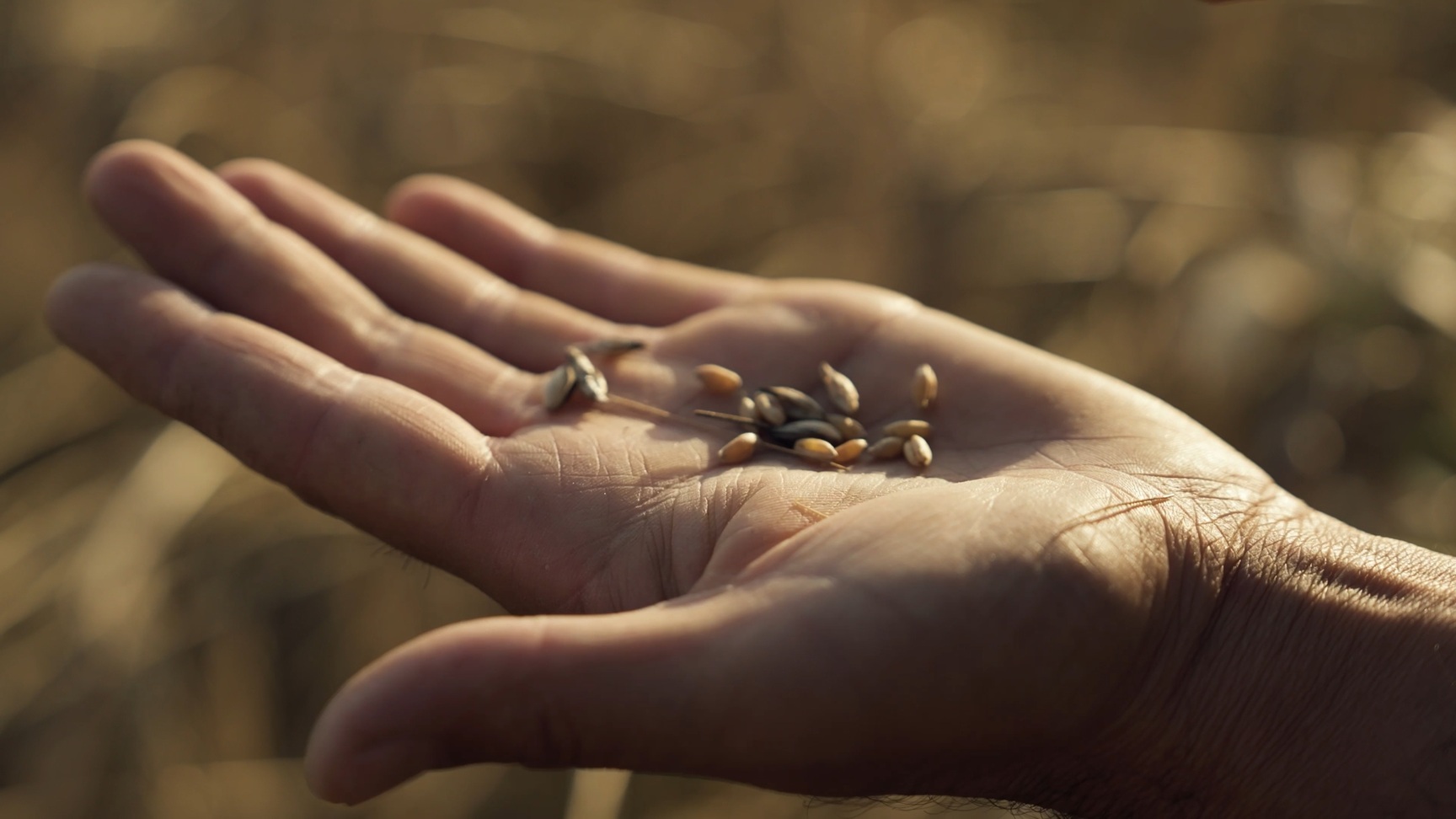
Samtskhe-Javakheti, a region in the south of Georgia, is famous not only for beautiful mountains and fertile soil, but also for old farming traditions. Recently, the region has taken an important step in preserving its cultural heritage and agrobiodiversity with the return of Kalooba – the traditional wheat harvest festival.
Once vibrant celebration of the harvest and an integral part of village life, Kalooba blended work, ritual and festivity into a unique expression of agrarian culture and community unity. However, over recent decades, the tradition declined due to rural migration, economic pressures, mechanization, and the erosion of traditional knowledge, eventually disappearing from everyday farming life.
Kalooba was always connected with special wheat varieties from Meskheti, like Akhaltsikhe Tsiteli Doli, Dika, and Shavfkha. These grains fed local people for centuries, kept food security, and protected agrobiodiversity. Harvesting and threshing them on the kalo can be seen as an early form of on-farm conservation of agrobiodiversity – a form of knowledge and heritage that is increasingly relevant today.
The tradition has now been revived and reintroduced as a cultural and agro-tourism event with the support of the GEF and UNEP – financed project “Sustainable Management of Agricultural Biodiversity in Vulnerable Ecosystems and Rural Communities of Samtskhe-Javakheti Region of Georgia”, implemented by REC Caucasus. Working closely with local municipalities, the LEPL Georgian National Tourism Administration (GNTA), the Samtskhe-Javakheti Destination Management Organization (DMO), farmers, and community groups, the project supports festivals that highlight aboriginal Meskhetian wheat and vine varieties. These events serve as platforms for promoting sustainable use of agrobiodiversity, showcasing traditional cuisine, and strengthening community ties by connecting generations.
Through this initiative, local farmers received certified planting materials, tailored trainings, and practical knowledge, as well as seeds of endemic wheat varieties (Akhaltsikhe Tsiteli Doli, Dika, and Shavfkha). As a result, these crops now cover more than 330 hectares across the six municipalities of Samtskhe-Javakheti: Akhaltsikhe, Aspindza, Adigeni, Akhalkalaki, Borjomi, and Ninotsminda. Interest continues to grow despite relatively low yields per hectare, underscoring their cultural and ecological importance.
These Meskhetian varieties are not only culturally significant but also biologically resilient. Unlike many modern commercial hybrids, they have been naturally selected over centuries to withstand the region’s unique conditions. They demonstrate strong resistance to common plant diseases, adapt well to droughts, temperature fluctuations, and poor soils, and maintain stable yields even under climate stress. This makes them especially important in the face of global climate change, where unpredictable weather and new pathogens increasingly threaten agricultural systems. By conserving and reintroducing these varieties, the project helps farmers secure sustainable harvests while reducing dependence on chemical fertilizers and pesticides.
In 2024, local farmers harvested 85,000 kilograms of wheat seeds. By 2025, this figure had doubled, reflecting rapidly growing interest and commitment to these local varieties. Beyond production, the revival of Kalooba also supports on-farm conservation, empowers women and youth through training and active participation, and promotes agrotourism, creating new opportunities for rural livelihoods.
Despite challenges such as declining rural populations and competition from commercial crops, the project has ensured the sustainability of Kalooba. Local authorities are now considering integrating the festival into annual cultural calendars, securing its place in the region’s social and cultural life.
Today, the renewed Kalooba is more than a festival – it is a symbol of resilience and revival, linking cultural heritage, biodiversity conservation, and community spirit. It highlights the role of women and men in sustaining ancient traditions, promotes agrotourism through rural tourism and local product promotion, and contributes to sustainable rural development in Samtskhe-Javakheti. Ultimately, it creates both economic benefits for local farmers and communities and a stronger sense of identity and pride for the region.
The project’s broader aim is to link biodiversity conservation with cultural heritage preservation, ensuring that traditional farming practices, festivals, and knowledge systems remain living parts of community life. By sustaining and reviving ancient wheat and vine varieties, the initiative helps reconnect people with their agricultural traditions – from bread and wine-making to food rituals and community celebrations like Kalooba.
The goal is not only to protect biodiversity but also to revitalize cultural identity, strengthen social cohesion, and create new economic opportunities through traditional food products, agrotourism development, and eco-friendly farming. In this way, the project demonstrates that agrobiodiversity is both a biological and cultural asset, supporting climate resilience, rural livelihoods, and the continuity of heritage for future generations.